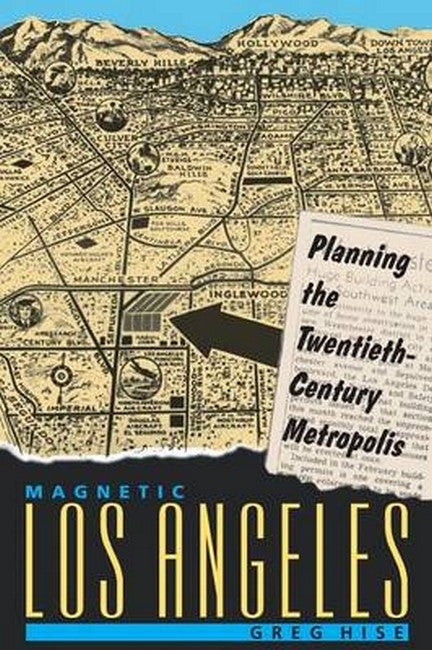''This fresh look at Los Angeles is clearly framed as a study whose subject has national implications . . . Magnetic Los Angeles is the first authoritative study we have on how the professionalization of planning . . . affected practice, on how the idea of decentralization became a major force in shaping the environment, and on the intricate details of the process of community building . . . Hise underscores how rich a yield studying Los Angeles can bring.''Richard Longstreth, American Studies International Magnetic Los Angeles challenges the widely held view of the expanding twentieth-century city as the sprawling product of dispersion without planning and lacking any discernable order. Using Los Angeles as a case study, Greg Hise argues that the twentieth-century metropolitan region is the product of conscious planningby policy makers, industrialists, design professionals, community builders, and homebuyersin direct response to political and economic conditions of the 1920s and the Depression, the defense emergency, and the immediate postwar years. ''Hise postulates a thesis that is as revolutionary as it is straightforward . . . Hise's narrative is well written and clearly structured, as he nimbly guides the reader through various informational thickets . . . Magnetic Los Angeles is bound to initiate a whole new direction in planning research.''Robert Wojtowicz, Journal of the Society of Architectural Historians ''Hise has written a fascinating history of L.A. and the thought process behind its developments. He deflates the myth that this megalopolis grew without rhyme or reason.''Jack Kyser, Los Angeles Times ''This is an important book and should be read by anyone interested in the history of the city, the homebuilding industry, and the twentieth-century western landscape.''Stuart McElderry, Western Historical Quarterly ''Hise's synthetic perspective is state-of-the-art: he breaks important new ground in the analysis of metropolitan structure . . . [and] affords us an alternative view of postwar urbanization, one that can easily be translated to other urban settings.''Robert Hodder, Journal of Planning Education and Research ''A welcome and bracing dose of reality.''Harold Henderson, Planning ''Hise makes a compelling case for L.A. as a product of middle-class dispersal from disquieting ethnic centers, the Progressive Era's proselytism of the social hygiene in suburbs, [and] 50 years of federal housing policy based on home ownership and segregation.''D. J. Waldie, Los Angeles Times

